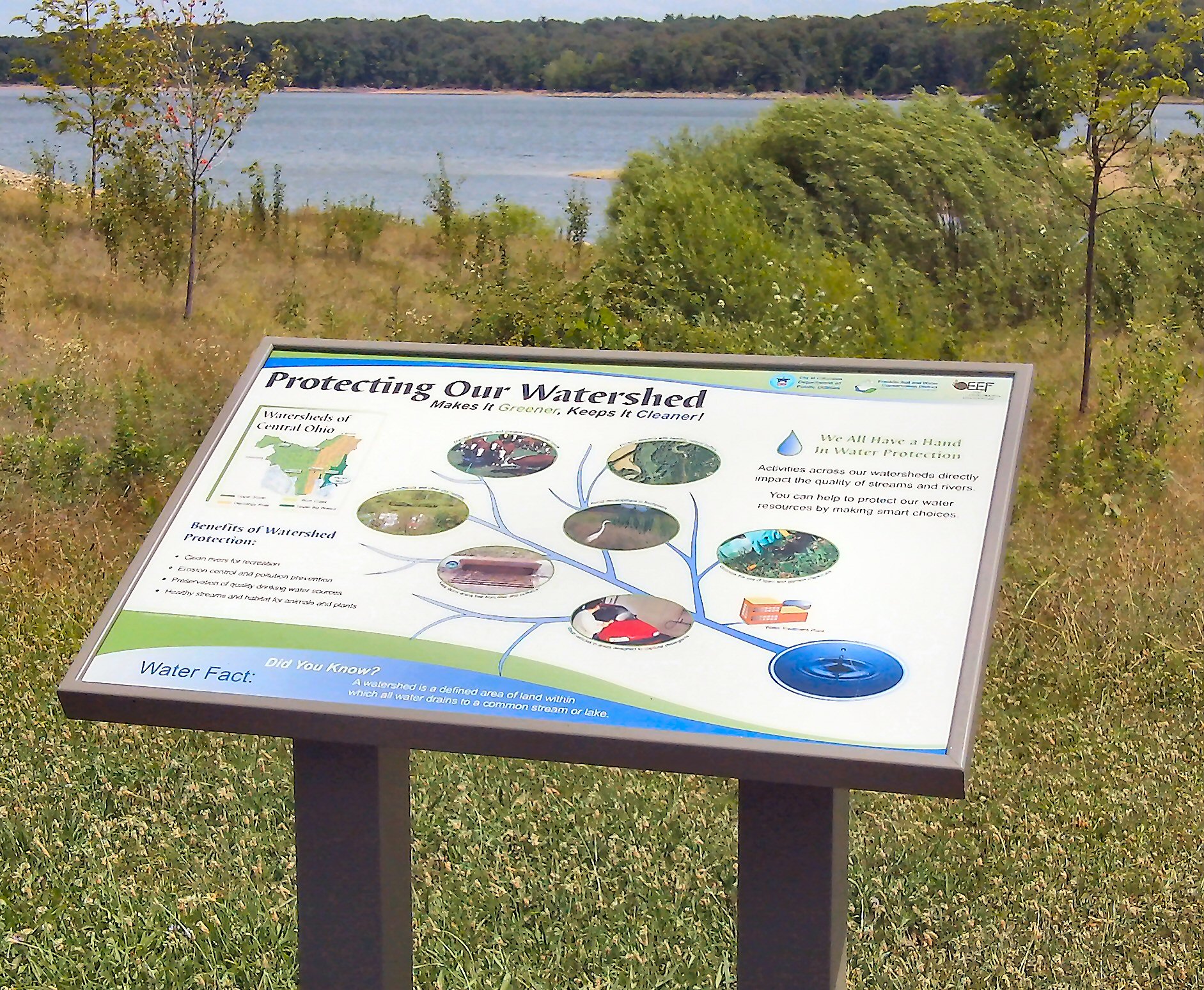Take a Tour

Signage installed at Griggs, O'Shaughnessy & Hoover Reservoirs invites park visitors to take a self-guided tour along the shoreline & learn about the green infrastructure installed there.
Rain gardens, porous pavement & more can improve the quality of storm water entering the reservoirs that supply our drinking water.
Non-point Source Pollution
Drinking Water Quality & Protection
Columbus has been a leader in water quality since the 1900s when the Hoover brothers researched water treatment methods to reduce typhoid which was prevalent during that time. As a result of their research, Columbus gained national prominence in the water industry.
Water quality monitoring has always been a part of the
treatment process
at the Columbus Water Treatment Plants, but up until the 1970s, there were few federal standards. After the establishment of the Environmental Protection Agency (EPA), The Safe Drinking Water Act (SDWA) was enacted by Congress. In the late 1970s, the Division of Water initiated plans for a water quality research laboratory. This new laboratory would permit the Division to conduct appropriate applied research, maintain high monitoring standards for raw and treated water quality and greatly improve our ability to comply with future federal and state EPA water regulations. In 1984, the Water Research Laboratory was completed.
With the addition of the Research Lab, the Columbus Division of Water had the ability to perform independent monitoring, research of new treatment methods, and provide water analyses of the watershed, distribution system and respond to the customer's water quality concerns. In 1989, the name was changed to the
Water Quality Assurance Laboratory
(WQAL).
In one of the most modern water quality research laboratories in the water supply industry, certified personnel perform thousands of tests each year and provide data regarding water quality, treatment, and microbiological testing. This ongoing testing and research assures that Columbus drinking water will be of the highest quality, currently meeting all SDWA standards.
More info...
Consumer Confidence Water Quality Report - CCR
Public Utilities' customers can consume their water with confidence, knowing
it meets all of the requirements of the Safe Drinking Water Act (SDWA). View the current report. Read
more about: annual water quality report, rigorous testing performed daily,
common water quality concerns...
- learn more
Common Water Quality Concerns
The most common water quality concerns are addressed; however, if you have
additional questions, please contact our Water Quality Assurance Lab (WQAL) at
645-7691 (8am - 4pm, Monday - Friday) or e-mail: [email protected].
- learn more
Our Commitment to Water Quality
Columbus provides a variety of services to protect both surface & drinking
water quality. We work with communities upstream to help reduce the impact of
agricultural activities. In our own community, we partner with landowners
adjacent to our reservoirs and monitor construction sites to limit sedimentation
that can impact local waterways. We also protect the quality of life
downstream by discharging clean water from our wastewater treatment plants.
- learn more
Columbus' Watershed Management Program
A high quality water supply source allows us to provide Columbus
area residents with excellent drinking water at a reasonable cost. Our watershed
program's focus is to protect our drinking water source and
supply.
- learn more
Green Infrastructure Protects Water
Green infrastructure can improve the quality of storm water entering the reservoirs that supply our drinking water. Follow signage installed at Griggs, O'Shaughnessy & Hoover Reservoirs which invites
park visitors to learn about the green infrastructure installed there.
- learn more
Water Sources
Learn about the water supply system that serves central Ohio residents now and into the future.
- learn more
Cross-Connection Backflow Control
To ensure there is no cross-connection or back siphoning of contaminated water into the main water supply, those with irrigation systems, auxiliary meters, car washes, pools and others are required to install a backflow prevention device which must be tested annually by a certified contractor.
- learn more
Watershed Partnerships
The Department of Public Utilities, its customers and local watershed groups work together in a unique partnership to protect our Watershed. Central Ohio residents participate in proactive watershed protection.
- learn more